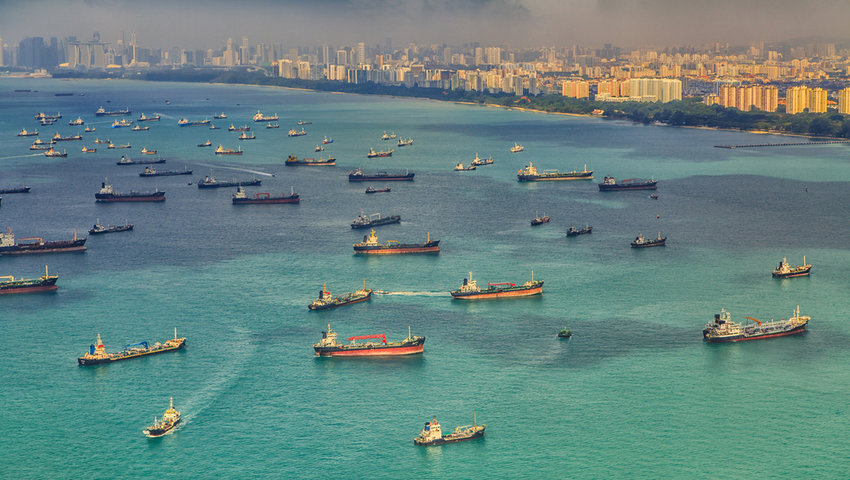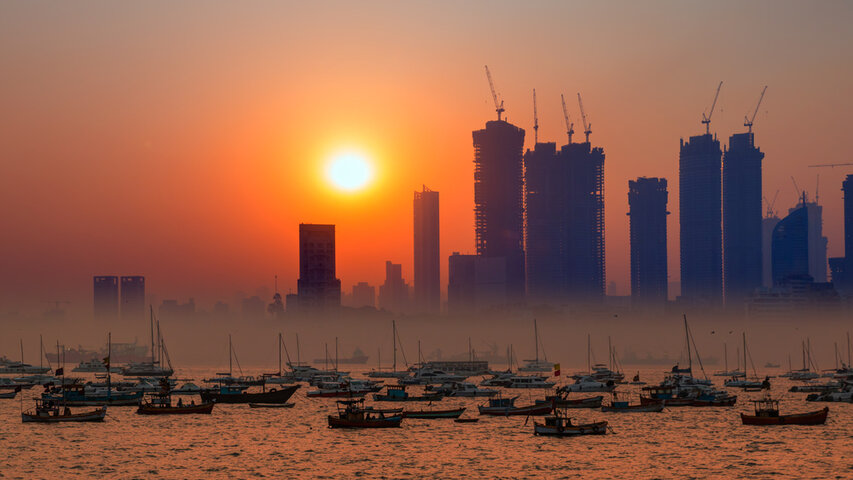After decades of growth, some worry Asian economies could fall into the ‘middle-income’ trap. There are good reasons to think it won’t happen.
The rise of Asia is one of the seismic socioeconomic trends of the past 40 years. It changed – and extended - the lives of hundreds of millions of people. It’s also created real wealth for investors. The MSCI Asia Ex Japan index is up 8% pa. since launching in 1987.1 Platinum’s Asia Fund is up on average 12% pa. since inception in 2003.
However, some economists and investment analysts worry Asia is in danger of falling into the “middle-income trap.”
The theory of the middle income trap posits that after a long-period of above average, export-led growth driven by cheap labour, middle-income countries in Asia get trapped between new, even lower-cost competitors and technologically-advanced economies like the US and Europe.
1. Asia is not a technology laggard
A key element of middle-income trap theory is that mid-income countries can’t continue to grow their income in the same way as high-technology economies like the US and Europe. Asia’s evolving technology capability should ease that worry.
Taiwan, for example, is home to perhaps the most sophisticated chip-making business in the world. After years of developing unique intellectual property, TSMC, (Taiwan Semiconductor) is now the foundry trusted by Nvidia, Apple and Google to make the super-complex chips required to churn through vast datasets and enable the AI revolution. It is a significant holding in the Platinum Asia Fund.
Platinum has a position in South Korea’s SK hynix - the 6th largest semiconductor business in the world by sales. Samsung, a long-term holding in the Asia Fund, is both a semiconductor player and one of the world’s leading consumer electronics businesses.
Many of the world’s largest e-commerce platforms are Asia based. The Temu platform is targeting $US60 billion in sales this year. It’s owned by PDD Holdings, a holding in the Platinum Asia Fund. JD.com – another leading e-commerce brand from China and another holding, is growing at 10% a year and made a net profit of US$3 billion last year.
Rather than lagging in technology, Asia is a centre for innovation. The World Intellectual Property Organisation ranks the world’s most important Science and Technology hubs’ - the areas where the highest density of inventors and scientific authors are located. In its 2023 ranking the leading hubs - Tokyo–Yokohama, Shenzhen–Hong Kong–Guangzhou, Seoul, Beijing and Shanghai-Suzhou – were in Asia. China now has highest number of these technology clusters .
Perhaps most importantly, technology firms are expanding throughout Asia. TSMC is building a plant in Singapore. Thailand and Indonesia are building electric vehicles for Chinese, Japanese and Korean car companies.
2. Trade continues to boom
The growth in intra-regional trade is another reason to believe Asian growth can roll on. The Regional Comprehensive Economic Partnership (RCEP) is an Asian free trade agreement that first took effect on 1 January 2022. It’s the largest trade bloc in history, linking a market of 2.2 billion people.2

Singapore is the second largest container port in the world (after Shanghai). It handled nearly 40 million TEUs in 2023 (20-foot container equivalents).
3. An expanding middle-class can be healthy
According to the UN Development Program, the rise of Asia lifted 1.5 billion people out of poverty, with China accounting for half that number. It also lifted millions into the middle class. Today, more than 50% of Asians are members of the middle class.
Serving that middle class is a core theme for the Platinum Asia Fund. A prime example is Korea’s Coway, which specialises in water and air purifiers. “That’s a big issue in parts of Asia,” says Cameron Robertson. “As people get wealthier they prioritise their family's health and lifestyle.” Coway is well established in Korea and now increasing market share in Thailand and Malaysia.
In Indonesia, we’re investing in a company called MAP Aktif, the dominant sports retailer in a demographically young country with an economy growing 5% a year. Map Aktif has around two thirds of the domestic sports market. Because of regulations around local partners and access to retail space, it’s the partner-of-choice for global clothing companies wanting to capture Indonesian consumers.
“They’ve got very good corporate governance and top notch management information systems, so you know what’s happening in the business,” says Cameron. “Because they’re so dominant, they can get great terms in major malls and that reinforces their bottom line.”
One of the classic signs of a booming middle class is rising property prices. In India, Platinum invested in the Initial Public Offering of Macrotech, a Mumbai-based developer of high-end residential homes and apartment complexes. When we bought in, the Indian property market had been stagnant for five years and the IPO was attractively priced.
Macrotech’s share price is up 35% pa. over the past five years and it’s trading on a PE of 74x.3 As a result we’ve started trimming our position and allocating our capital to better value opportunities – like Indonesian property.
Indeed, the Indonesian property market now looks similar to India five years ago. “There are retail and residential developers trading very cheaply,” says Cameron Robertson. “That’s an opportunity for us because their core customers – Indonesia’s middle class - is getting larger and feeling more confident about the future.”

Through companies like Macrotech, Platinum investors have benefited from the housing boom in Mumbai. Today a similar opportunity looms in indonesia.
The China story
Intriguingly, it is the great engine of Asian growth, China, that today looks closest to fulfilling the middle-income prophecy. Following 30 years of growth at close to 10% a year, its economy has slowed sharply.
China is struggling with the aftermath of a property crash. Long-run economic analysis suggests property crashes cut much deeper than their sharemarket cousins. Property busts hit more people and do more damage to construction activity and consumer demand. And that’s definitely visible in China today.
The Platinum view on China hinges on two interconnecting premises:
-
The overall economy will recover when Chinese property recovers and that will happen when the government puts a floor under that market. Despite numerous policy initiatives, that floor is still not in place.
-
However, China is still a massive and growing economy and there are companies in a variety of industries that are profitable, well-managed and growing. Thanks to the property hangover, you can buy them at compelling valuations.
In previous quarterlies we’ve discussed our holding in big Chinese stocks that fit the above criteria - like ZTO (e-commerce delivery), Trip.com 4 (online travel) and CATL (batteries).
We’re also finding opportunities in consumer digital businesses. We recently bought into Meitu, China’s biggest photo editing app. “It has a user base of 250 million. Plus an expanding business in photo, presentation and graphics editing for business that’s like a Chinese Canva,” says Cameron. “There are 10 million small businesses using that app already”.
What all these Chinese businesses have in common is a distinct, profitable position in large business segments. We prefer these businesses over more export-oriented names as they could continue to thrive even if geopolitical shifts place punitive tariffs on Chinese exports 5.
Asia – why now?
Thanks to growing intra-regional trade, a burgeoning middle class and ongoing investment in technology, Asia is likely to step over the middle income trap – especially if government moves help China resolve its property issues.
The World Economic Forum says Asia will “remain the motor of the global economy” in 2024 and beyond. Given share prices have stagnated over the past few years, that means there is still time for investors to capture the upside of Asian growth by investing in high quality but undervalued companies.
1. Source: Factset, in AUD, to 30/6/24.
2. Source: How ASEAN Can Use Its Trade Advantage to Power Ahead, BCG, May 2023.
3. Source: Factset, local currency, June 30 2024.
4. For an in-depth look at trip.com see our article: Passports to profit?
5. For more on how geopolitics is influencing markets see our video: Geopolitics and investing in 2024



